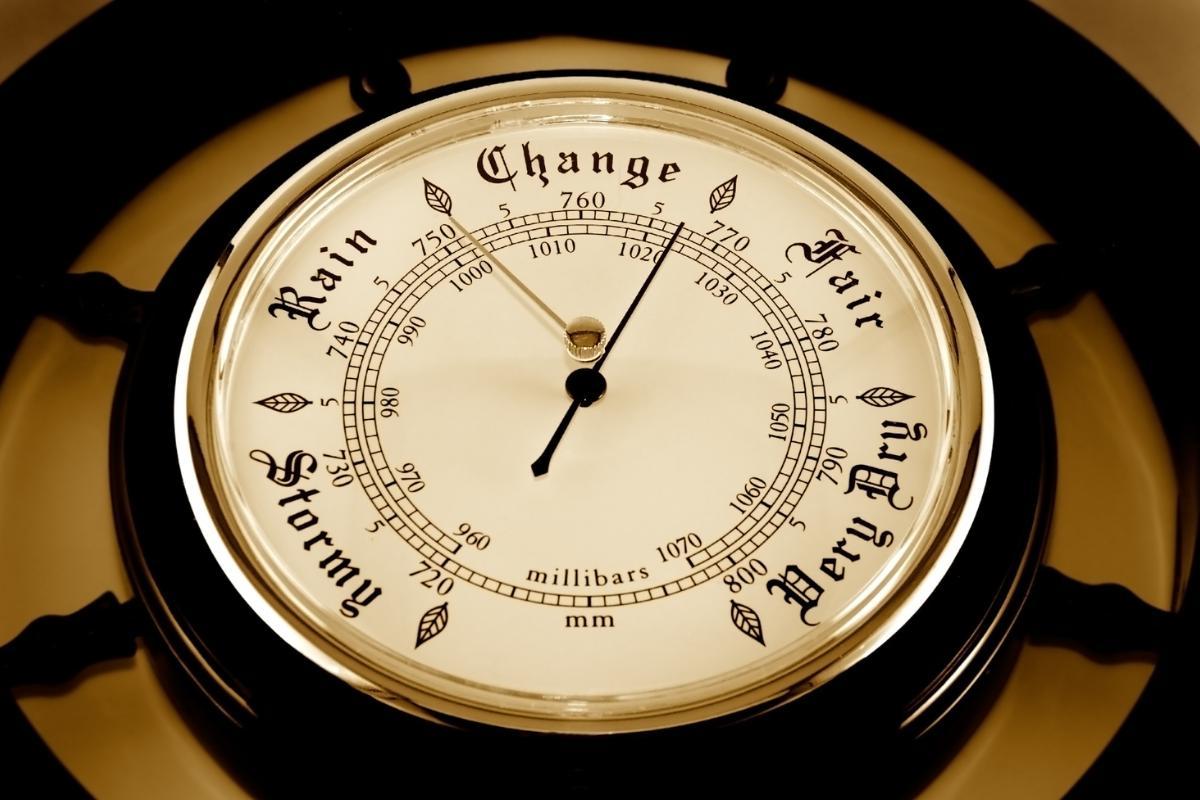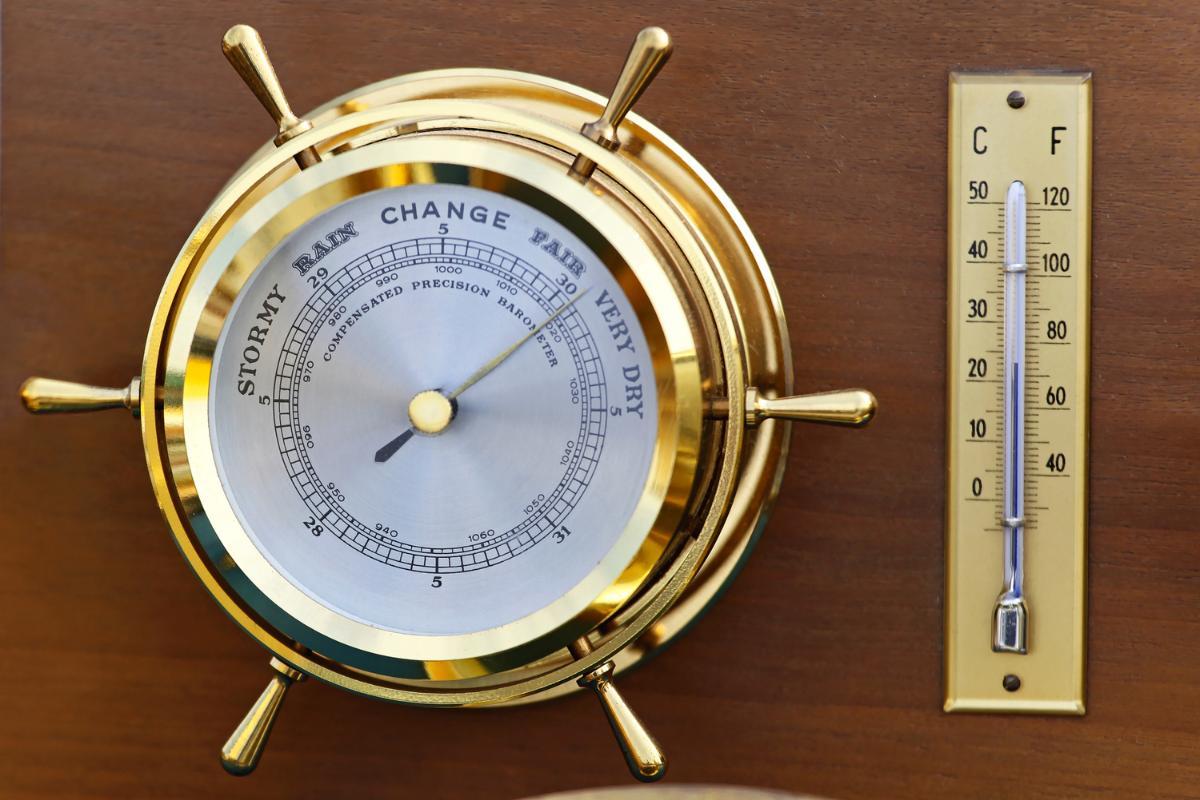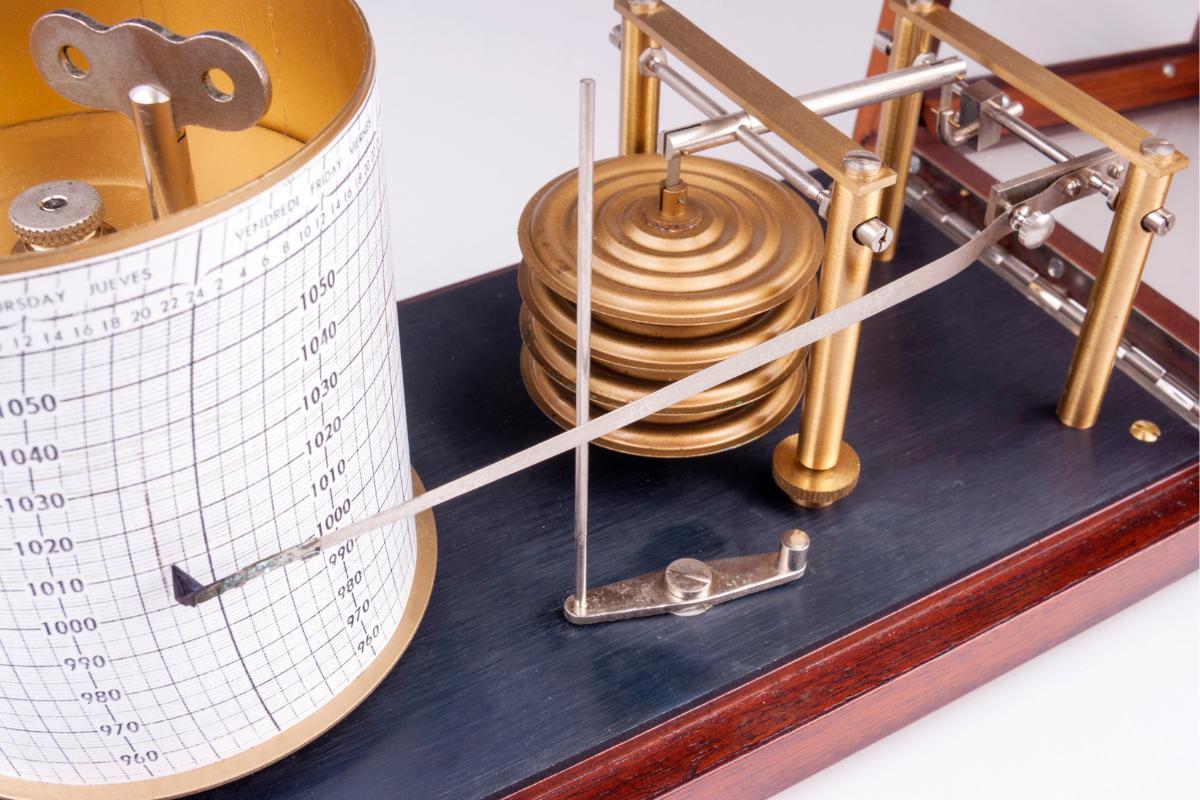What Is a Barometer and What Does It Measure?


A barometer is an instrument used to measure atmospheric pressure, a fundamental metric for predicting changes in the weather. While they may be less common in homes than they once were, barometers are still vital pieces of equipment to help assess atmospheric conditions. In this article from thedailyECO, we explore what is a barometer and what does it measure? We understand how measuring atmospheric pressure helps to inform weather forecasts, as well as the different types of barometers which can be used.
What is a barometer?
A barometer is an instrument used to measure atmospheric pressure in a given environment. This pressure represents the weight exerted by air on the surface of Earth. This device is key in meteorology. Changes in atmospheric pressure can indicate variations in the weather, such as the arrival of storms or good weather.

What is a barometer used for?
A barometer is primarily used to predict changes in the weather by measuring atmospheric pressure. This information is valuable to meteorologists to predict weather patterns for forecasts. It is also vital for sailors, pilots and anyone who needs to anticipate weather conditions on an immediate basis. The following are the important uses of barometers:
- Short-term weather: when atmospheric pressure increases, it is usually a sign of good weather or clear skies. Conversely, a drop in pressure indicates the possible arrival of bad weather, such as rain or thunderstorms. For this reason, barometers are useful for predicting short-term weather changes .
- Air navigation: in aviation, the barometer is necessary to determine the altitude of aircraft. Airplanes use a variation of the barometer called an aneroid altimeter, which measures air pressure and converts it into a height reading. This helps pilots maintain the proper altitude during flight.
- Marine navigation: at sea, a sudden change in pressure can be a sign that a storm or bad weather is approaching. Seafarers of all kinds can use a barometer to safely plan their route and avoid dangerous conditions.
- Climate analysis: barometers are also used in scientific studies of the climate and atmosphere . For example, researchers can analyze pressure patterns in different parts of the world to study more complex weather phenomena, such as hurricanes or cyclones.
While barometers are important for measuring pressure in the air, they are not the only method. To learn more, you can read our overview on how do we measure atmospheric pressure?
How does a barometer work?
The way a barometer works depends on the type of instrument. They all measure atmospheric pressure, meaning the weight of the air around us. However, they do it in different ways according to their mechanism. We explore a how barometer works according to the two main types:
Mercury barometer
A mercury barometer has a glass tube which is closed at one end. The tube is filled with mercury and inverted into a container also containing mercury. The open part of the tube is immersed in the container.
Atmospheric pressure exerts force on the mercury in the container, pushing it up inside the tube. The higher the atmospheric pressure, the higher the level of mercury inside the tube. As the pressure decreases, the level of mercury drops.
The height of the mercury inside the tube is measured in millimeters or inches. The measurement corresponds to the atmospheric pressure of the environment in which the mercury barometer is used. For example, a typical value of normal pressure at sea level is about 760 mm of mercury (mm Hg). Changes in this height are used to predict climate variations.
Aneroid barometer
The aneroid barometer has a small metal capsule which is sealed and flexible. Known as an aneroid capsule, it is empty of air and very sensitive to changes in atmospheric pressure. When the air pressure increases, it compresses the capsule. When the pressure decreases, the capsule expands. This compression or expansion movement is very small, but it is enough to move a series of levers and gears inside the barometer.
The movement of these mechanical parts is amplified and transferred to a needle that moves on a graduated scale. By recording the levels on this scale, the aneroid barometer indicates atmospheric pressure without the need for liquids such as mercury.
Discover more about how pressure affects weather with our article on what is the atmospheric electrical phenomenon?

Types of barometers
There are several types of barometers, each with different mechanisms and applications. We have already described mercury and aneroid barometers, the most common types of barometers you can find. Here we explain some other types of barometer:
Digital barometer
With the advancement of technology, digital barometers have become increasingly common. These electronic devices use advanced sensors to measure atmospheric pressure and are often integrated into other devices. Such devices include mobile phones smart watches or home heating systems.
Digital barometers work by using electronic sensors that detect changes in air pressure and transform that information into a digital reading. Some digital barometers can also connect to networks to send or receive weather data.
Barograph
The barograph is a variation of the aneroid barometer that not only measures atmospheric pressure, but also records its changes over time. A barograph uses the same principle as the aneroid barometer (i.e. a capsule that deforms under pressure), but is equipped with a rotating drum covered with paper. A pen connected to the capsule mechanism draws a line on the paper, recording pressure changes over time.
Water barometer
It is a more rudimentary barometer that uses water instead of mercury. It is also known as the Goethe barometer, named after the German poet and scientist Johann Wolfgang von Goethe, who popularized this design.
The water barometer consists of a bottle filled with water and a sealed opening through which a straw or tube is inserted. When atmospheric pressure increases, the water in the tube falls. When the pressure decreases, the water level in the tube rises. This type of barometer is not very accurate. It is more commonly used as a scientific demonstration to explain the concept of pressure readings than as a serious meteorological tool.
Bucket or siphon barometer
This type is a less common variation of the mercury barometer. It uses a column of mercury in a tube open at both ends, making it simpler but less accurate than the traditional mercury barometer.
The bucket barometer works in a similar way to the mercury barometer, but with a simpler design that includes a siphon-shaped tube. The difference is that this barometer allows the level of mercury to be observed directly without the need for a sealed column. It is less accurate and has been almost completely replaced by more advanced versions.
Barometers have been useful for centuries in determining atmospheric pressure, but understanding how our atmosphere behaves is imperative for predicting weather and monitoring climate. We learn more with our article which explains what are atmospheric rivers?

If you want to read similar articles to What Is a Barometer and What Does It Measure?, we recommend you visit our Environment (other) category.
- Cordova Adrian. Characteristics of the Barometer. SCRIBD. https://es.scribd.com/document/432300722/Caracteristicas-Del-Barometro
- What is a barometer and how does it work? 2016. Altocumulo.
https://www.altocumulo.com/que-es-un-barometro-y-como-funciona/








